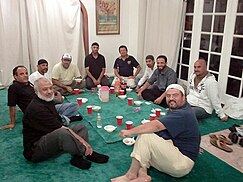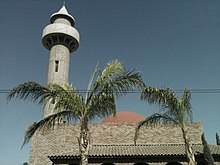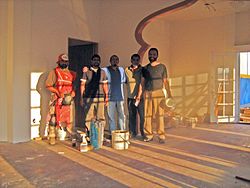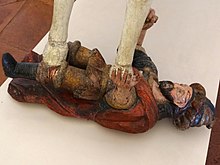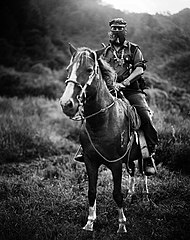
Chiapas, officially the Free and Sovereign State of Chiapas, is one of the states that make up the 32 federal entities of Mexico. It comprises 124 municipalities as of September 2017 and its capital and largest city is Tuxtla Gutiérrez. Other important population centers in Chiapas include Ocosingo, Tapachula, San Cristóbal de las Casas, Comitán, and Arriaga. Chiapas is the southernmost state in Mexico, and it borders the states of Oaxaca to the west, Veracruz to the northwest, and Tabasco to the north, and the Petén, Quiché, Huehuetenango, and San Marcos departments of Guatemala to the east and southeast. Chiapas has a significant coastline on the Pacific Ocean to the southwest.

San Cristóbal de las Casas, also known by its native Tzotzil name, Jovel, is a town and municipality located in the Central Highlands region of the Mexican state of Chiapas. It was the capital of the state until 1892, and is still considered the cultural capital of Chiapas.

Chiapas is a state in Southwest Mexico. According to the 2020 Mexican census, it has the eighth largest population of all states with 5,543,828 inhabitants and the 10th largest by land area spanning 73,560.47 square kilometres (28,401.86 sq mi). Chiapas is officially divided into 124 municipalities, although the establishment of municipal authorities in Belisario Domínguez was suspended in 2015 pending the resolution of a territorial dispute between Chiapas and the neighbouring state of Oaxaca. In 2021, the Mexican Supreme Court resolved this dispute in Oaxaca's favour, and annulled the 2011 decree that had created Belisario Domínguez.

The Mosque–Cathedral of Córdoba, officially known by its ecclesiastical name of Cathedral of Our Lady of the Assumption, is the cathedral of the Diocese of Córdoba dedicated to the Assumption of Mary and located in the Spanish region of Andalusia. Due to its status as a former mosque, it is also known as the Mezquita and as the Great Mosque of Córdoba.

El Salvador is a predominantly Christian country, with adherents Islam being a minuscule minority. Due to the secular nature of the country's constitution, Muslims are free to proselytize and build places of worship in the country.

Venezuela is a predominantly Christian country, with Islam being a minority religion. There are approximately 100,000 Muslims in Venezuela which make up 0.4 percent of the nation's population. Venezuela has a small but influential Muslim population. Many of them are Arabs of Lebanese, Palestinian, Syrian and Turkish descent.

Honduras is a predominantly Christian country, with Islam being a small minority religion. Due to secular nature of the country's constitution, Muslims are free to proselytize and build places of worship in the country. The statistics for Islam in Honduras estimate a total Muslim population of 11,000 representing 0.1 percent of the population.

Chile is a predominantly Christian country, with adherents of Islam being a minuscule minority. Due to the secular nature of Chile's constitution, Muslims are free to proselytize and build places of worship in the country. The statistics for Islam in Chile estimate a total Muslim population of approximately 5,000, representing less than 0.02% of the population. There are a number of Islamic organizations in Chile, including the Muslim Society of Chile and As-Salam Mosque in Santiago, Bilal Mosque in Iquique, the Mohammed VI Cultural Center in Coquimbo, and Islamic Foundation of Chile in Santiago.

Almoloya de Juárez is a town in the State of Mexico and the seat of the municipality of Almoloya de Juárez. The name Almoloya comes from the Nahuatl, that is properly Almoloyan, composed of: atl, "water"; molo "impersonal voice of moloni, to flow the source" and yan, "place"; that it means "place where flows the water source".

The Albaicín, also known as Albayzín, is a district of Granada, in the autonomous community of Andalusia, Spain. It is centered around a hill on the north side of the Darro River which passes through the city. The neighbourhood is notable for its historic monuments and for largely retaining its medieval street plan dating back to the Nasrid period, although it nonetheless went through many physical and demographic changes after the end of the Reconquista in 1492. It was declared a World Heritage Site in 1994, as an extension of the historic site of the nearby Alhambra.

Tuxtla Gutiérrez International Airport, officially known as Aeropuerto Internacional Ángel Albino Corzo, is an international airport situated in the municipality of Chiapa de Corzo, Chiapas. It serves air traffic for Tuxtla Gutiérrez and a significant part of the State of Chiapas, including San Cristóbal de las Casas and Comitán.

The Islamic Cultural Center "Custodian of the Two Holy Mosques King Fahd in Argentina" is a mosque and center for Islamic culture located in Buenos Aires, Argentina. It is named after King Fahd of Saudi Arabia.

Diego de Mazariegos y Porres ( conquistador. He conquered Chiapas in Mexico, and in 1528, together with Andrés de la Tovilla, founded San Cristóbal de las Casas and Chiapa de Corzo. He was the first Lieutenant Governor of Chiapas from 1528 to 1529.

Chiapas handcrafts and folk art is most represented with the making of pottery, textiles and amber products, though other crafts such as those working with wood, leather and stone are also important. The state is one of Mexico's main handcraft producers, with most artisans being indigenous women, who dominate the production of pottery and textiles. The making of handcrafts has become economically and socially important in the state, especially since the 1980s, with the rise of the tourist market and artisans’ cooperatives and other organizations. These items generally cannot compete with commercially made goods, but rather are sold for their cultural value, primarily in San Cristóbal de las Casas.

The Al Ahmad Mosque is an Islamic place of worship in Buenos Aires, Argentina, opened in 1985. It is the second oldest mosque in Buenos Aires but it is the oldest building with Islamic architecture in Argentina and it was designed by Ahmed and Elia Ham.
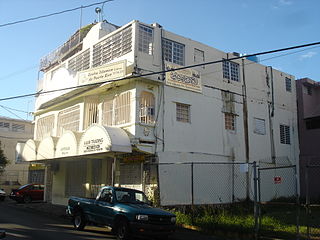
The Río Piedras Mosque or Puerto Rico Islamic Center is a mosque in Río Piedras, San Juan, Puerto Rico.
